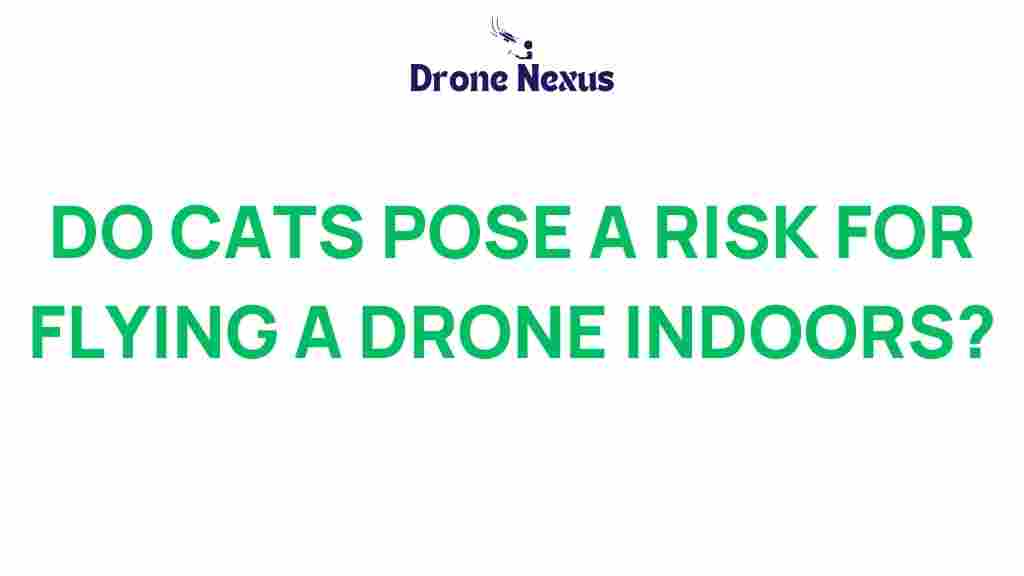Do Cats Pose a Risk When Flying Drones Indoors?
As drone technology continues to advance, more people are exploring the possibilities of flying drones indoors. However, if you’re a cat owner, you may find yourself wondering: do cats pose a risk when flying drones indoors? In this article, we will delve into the interactions between cats and drones, focusing on the potential risks, safety considerations, and how to ensure a harmonious environment for both your feline friend and your flying device.
The Fascination of Cats
Cats are naturally curious creatures. Their instincts drive them to investigate new objects, sounds, and movements in their environment. When flying a drone indoors, the sudden noise and movement can attract a cat’s attention, potentially leading to unforeseen consequences. Understanding your cat’s behavior is essential to minimizing risks when flying drones.
Understanding the Risks
Before flying your drone indoors, it’s crucial to be aware of the potential risks associated with your cat’s presence:
- Chasing Instinct: Cats may see a drone as a toy or prey, leading them to chase it, which can result in accidents.
- Noise Sensitivity: The sound of a drone can be unsettling for some cats, causing them to react unpredictably.
- Physical Hazards: Collisions between a drone and a cat can cause injury to either party.
Preparing for Indoor Drone Flight
To safely fly your drone indoors, follow these steps to minimize risks associated with cats:
Step 1: Create a Safe Space
Before launching your drone, ensure that your cat has a designated safe space away from the flying area. This could be a separate room or a cozy corner with their favorite toys and bedding.
Step 2: Observe Your Cat
Spend some time observing your cat’s behavior. If your cat shows signs of anxiety or aggression towards the noise or movement of the drone, reconsider flying it indoors.
Step 3: Use a Quiet Drone
Some drones are designed to operate quietly, reducing the noise that may disturb your cat. Research and choose a model that is less likely to cause stress.
Step 4: Gradual Introduction
Consider introducing your cat to the drone gradually. Allow them to explore the drone while it is stationary, and reward them with treats for calm behavior.
Flying the Drone Safely
When you’re ready to fly the drone, adhere to the following safety tips to protect both your cat and the drone:
- Keep the Flight Area Clear: Ensure that the area is free of obstacles and any items that could be knocked over.
- Limit Flight Time: Keep flights short to minimize noise and stress for your cat.
- Maintain Control: Always keep the drone within your line of sight and maintain control to avoid accidents.
Troubleshooting Common Issues
Even with careful preparation, issues can arise. Here are some troubleshooting tips:
Issue 1: Cat is Anxious or Aggressive
If your cat appears anxious or aggressive towards the drone, immediately land the drone and give your cat some space. You may need to reconsider flying indoors altogether.
Issue 2: Drone Crashes
In the event of a crash, check both the drone and your cat for any signs of injury. Ensure that the drone is functioning properly before attempting to fly again.
Issue 3: Cat Chasing the Drone
If your cat begins to chase the drone, calmly redirect their attention to a toy or treat. It may be necessary to stop flying until your cat has settled down.
Conclusion
Flying drones indoors can be an exciting hobby, but for cat owners, it comes with unique challenges. Understanding the risks that cats pose when flying drones indoors is crucial for ensuring a safe environment for both parties. By preparing adequately, observing your cat’s behavior, and following safety tips, you can enjoy flying your drone while keeping your cat’s well-being in mind.
For further information on pet safety around technology, you can check this resource. Also, if you want to explore more about the fascinating world of cats, visit this page.
This article is in the category Safety and created by DroneNexus Team
